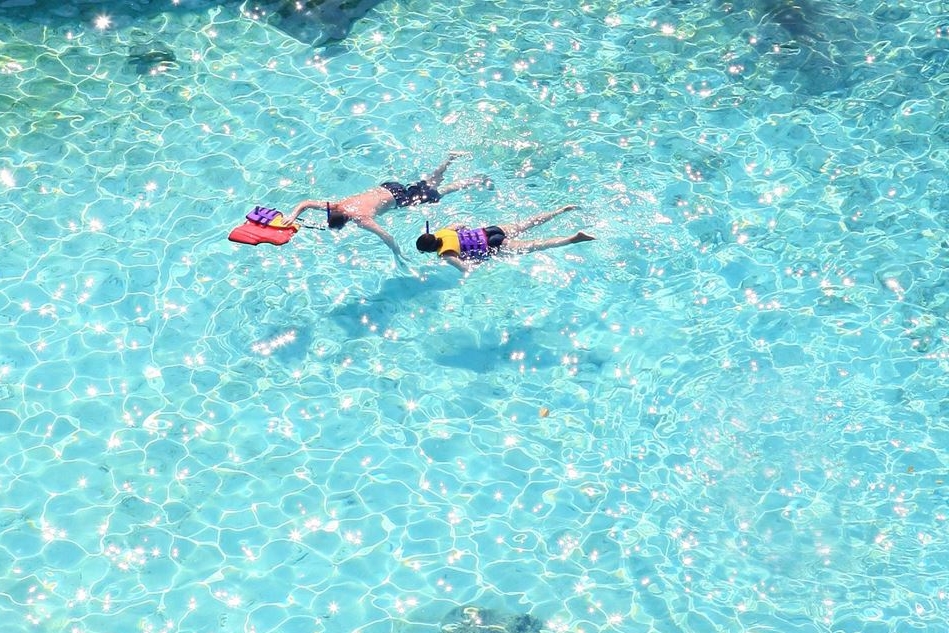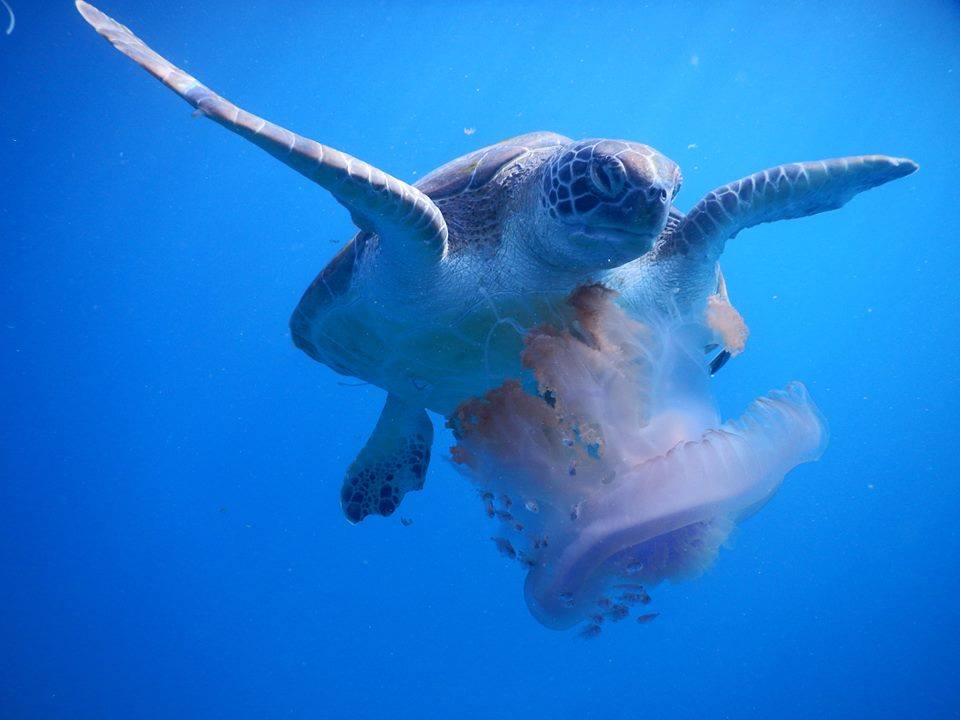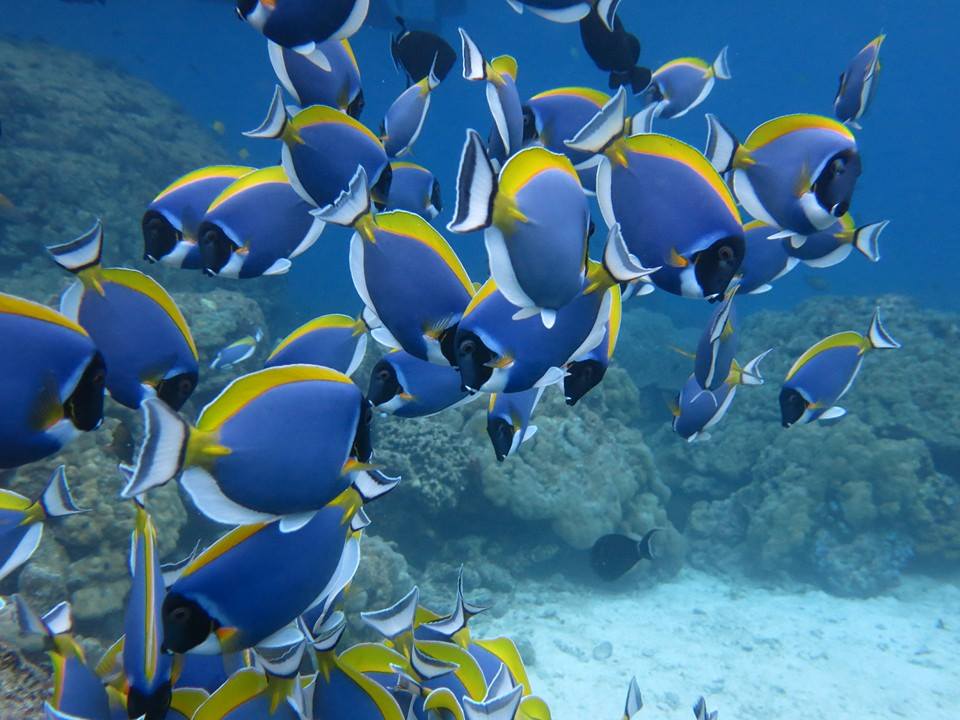General Information about Similan Islands
“Similan Islands” is an underwater paradise teeming with life at large. The coral And among fishes. The water was crystal clear glass and has a beautiful white sand beaches. Similan is famous for its beautiful deep water, 1 in 10 of the world’s top sailing and rock as a symbol of the Similan Islands National Park. Leasing is located at the island, 8 (Similan Islands) that is very beautiful. And is a highlight of the Similan Islands.
Climate
Summer begins in mid February and ends in May. Rainy season starts from mid May till October with North – Western wind. Average annual temperature is 27๐c with average of approximately 83% humidity all year round. Average annual rainfall is measured at 3,560 millimeters with evaporation rate of 1,708 millimeters per year. In rainy season, the national park will be closed during 16 May – 31 October every year for visitors safety.
Flora and Fauna
Types of forests can be divided into 3 main characteristics
Beach Forest –open forest with scattered plants at approximate height of not over 15 meters such as Terminalia catappa, Barringtonia asiatica, Callophyllum inophyllum. Small perennials and large shrub not exceeding 10 meters in height found are Xylocarpus gaugeticus, Herltiera littoralis, Hibiscus tiliaceus which is a smaller shrub found are Capparis micracautha, Breynia vitris-idaea Fischer, Pandanus odoratissimus. Grounds covering plants common in the area are beans, Vigna sp., Spilanthes sp., Ischaemum barbatum, Lophatherum gracile, Hoya parasittrica, Asplenium nidus.
Scrub Forest – habitat for shrubs which can develop on grounds with soil depth of not exceeding 30 centimeters. A few cacti can be found while more common shrubs found are Cercus spp., Dracaena spp., Memecylon caeruleum, Cleistanhus polyphyllus.
Primary Forest – habitation for perennials at a height of 20 meters or above such as Dipterocarpus costatus, Dipterocarpus boudii, Shores spp.,. Lower perennials at 15-20 meters in height are palaquium obovatum, Eugenia denaiflora, Wrightia sp., 10-15 meters in height are Hydnocarpus ilicifolius, Semecarpus curtisii, Diospyros wallichii. Bambusa sp., Calamus longisetus, Plam, Amydrium medium and Bauhinia glauca are also found with other creepers and parasites such as betel pepper, bauhinia and orchid.
The most unique vegetation found only on Ko Yai in the Andaman sea are sapodilla and Nguang Chang Talay while edible plants are Manilkara sp., Toumefotia argentia, Bouea oppositifolio, Lepisanthes rubiginosa, Diospyros wallichii, Neang and Copparis micracantha.
Marine and Wildlife:
Beneath the sea at Mu Ko Similan National Park lies a complex ecosystem commonly called the rainforest of the sea: the coral reef. The major residents of the reef are coral and the closely related sea anemones; of the Phylum Cnidaria, Class Anthozoa, which contains all radially symmetrical invertebrate animals. Corals and sea anemones exist as individual polyps living in either solitary or mostly colonial forms. The polyps of hard corals construct communal limestone homes which are built up into a multitude of shapes and sizes eventually giving rise to a coral reef. Soft corals have soft bodies made of large numbers of identical polyps connected by fleshy tissue (Zooxanthallae). These soft corals contain small algae within their tissues which are able to convert the sun’s energy into food. This cooperative relationship is known as symbiosis and also exists in hard corals, clams and other marine organisms. There are several factors that support good environment for the reef i.e. temperature, salinity, light, wave and tide, sedimentation and nutrient. Therefore, healthy coral reef can be found easily in the Andaman Sea comparing to the Gulf of Thailand. In Andaman Sea, coral reefs are able to classified as deep water and medium water. For the deep water coral reef grow down to 30 m. Of course, in this case water allows enough light for the algae. This reef type is mostly found in Similan and Surin islands. For the rest area, medium water coral reef grow between 8-15 m beneath the surface.
Coral can also be classified to fall into these structural categories: massive, columnar, encrusting, branching, foliceaous, laminar and free-living coral. The hard corals found in Mu Ko Similian National Park are deep water species of mostly staghorn coral types (Acropora echinata) and the smaller cauliflower shaped types (Seriatopora histrix). Many other species of marine life co-exist within the coral reef: Gorgonian sea fans, flower-like soft coral, several species of crabs, spiny painted lobsters, squid, sponges, sea cucumbers and giant clams.
Above the sea surrounding each island lies Beach forest, which steadily becomes Tropical forest further inland. Important tree species include Manilkara sp. Cordia subcordia, and Tournefotia argentia. A survey conducted in 1992 revealed that 39 species of birds can be found on the nine islands. Resident species include the Brahminy Kite, and the White-breasted Waterhen, while migratory species include the Pintail Snipe, and Grey Wagtail. Temporary migratory species include the Barn Swallow, Cattle Egret, Watercock, and the Roseate Tern. The most commonly seen species include the Pacific Reef-Egret, Nicobar Pigeon, Pied Imperial Pigeon, White-bellied Sea-Eagle, and the Collared Kingfisher.
The environment of Mu Ko Similian National Park is obviously that of a small island, wherever you go, you are not far from the sea. Natural fresh water reserves are few, and as a result, large mammal species cannot exist. Surveys have revealed that 27 species of small mammals exist within the park, including 16 species of bats namely: the black-bearded tomb bat, the lesser false vampire bat, the intermediate horseshoe bat, the lesser bent-winged bat, and the hairless bat. 3 species of squirrels can be found including the gray-cheeked flying squirrel. 4 species of rats: the yellow Rajah rat, the ricefield rat, roof rat and noisy rat can be seen scurrying around as well. Finally, the more unusal but fairly common residents include the bush tailed porcupine, common palm civet, flying lemur and the bottlenosed dolphin. 22 species of reptiles and amphibians can be found in the park including the banded krait, reticulated python, white-lipped pit viper, common pit viper, garden blue lizard, hawksbill turtle, leather turtle, bengal monitor lizard, common water monitor lizard, ornate froglet, common asiatic frog, marsh frog, and the common bush frog. Finally, another most interesting species located in the Similans island is called the hairy leg mountain land crab. This crab is found in such large numbers you will be sure to see many just by walking around a bit. No matter where you are on the island, seeing this creature will be a reminder you are never far from water.
Data Reference: http://www.dnp.go.th





